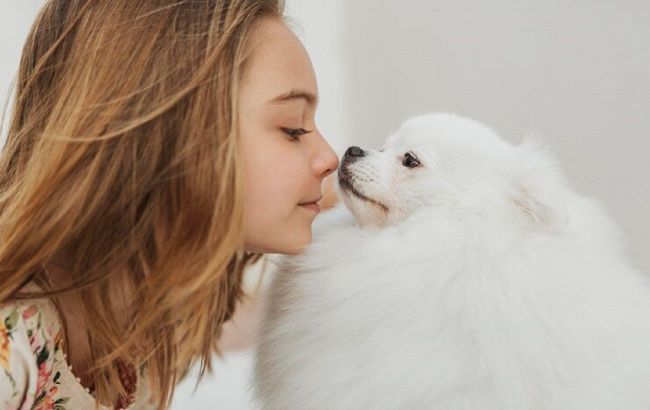Benefits of interacting with pets for kids
 Why children need pets (photo: freepik.com)
Why children need pets (photo: freepik.com)
Communication between children and pets provides numerous benefits for emotional and social development. Friendship with an animal helps children learn responsibility, empathy, and improves their mental health.
Benefits of having a pet for children
Many families choose to get pets, and this is not without reason. According to research conducted by the C.S. Mott Children’s Hospital, about two-thirds of families have pets. The most popular animals include dogs (76%) and cats (41%), along with fish, birds, reptiles, and small mammals like rabbits and guinea pigs.
Parents often decide to acquire a pet for their children to provide joy and companionship and teach responsibility. Pets offer several advantages, including:
- Responsibility. Children learn to care for animals, helping them develop responsible behaviors.
- Emotional and psychological health. Interaction with animals improves mood and aids in stress management.
- Friendship and support. Pets become loyal companions that children can always rely on.
- Empathy and compassion. Children learn to understand others' feelings, which helps them form healthy social relationships.
Introducing a child to a pet
When you decide to introduce your child to a pet, it is essential to follow specific guidelines to ensure safety and comfort for both parties. Do not leave the child alone with the animal until you are confident in their ability to interact safely. This is particularly important for toddlers, who may be too active or scared, potentially leading to unpredictable situations.
Before the introduction, have the child sit in a cozy spot, like a sofa or chair. Allow the pet to approach the child at its own pace. This will help the animal feel more comfortable and reduce its stress. Encourage the child to gently pet or talk to the animal to create a positive atmosphere. You can also suggest giving the pet treats and fostering positive associations.
During their interaction, closely monitor the behavior of both the child and the pet. If you notice either becoming aggressive or overly excited, intervene immediately. It is crucial to guide their interaction, teaching the child to respect the animal's personal space and demonstrating how to interact appropriately.
With a patient and caring approach, you can foster a strong bond between your child and the pet, bringing joy, teaching responsibility, and enriching the entire family's emotional well-being.
Building a positive relationship between pets and children
To cultivate positive relationships between children and pets, it is essential to adhere to a few simple rules:
- Create a safe haven for the pet. If the animal needs quiet time, give it a space to retreat. Teach the child to respect this space.
- Establish interaction guidelines. Discuss with the child how to properly communicate with animals, explaining warning signals such as growling or hissing.
- Discuss animal body language. Educate the child about normal pet behaviors. Consulting with a veterinarian can help understand specific animal behaviors.
- Monitor interactions. Always be present during the child's first encounter with the pet. If the animal shows signs of stress, intervene.
- Lead by example. Show the child how to care for the animal and interact correctly to instill love and responsibility.
These simple steps will help create a safe and comfortable environment for both, promoting the development of their relationship.
Learn about five incredible animal tongues.
Sources: The Spruce Pets, National Geographic.

